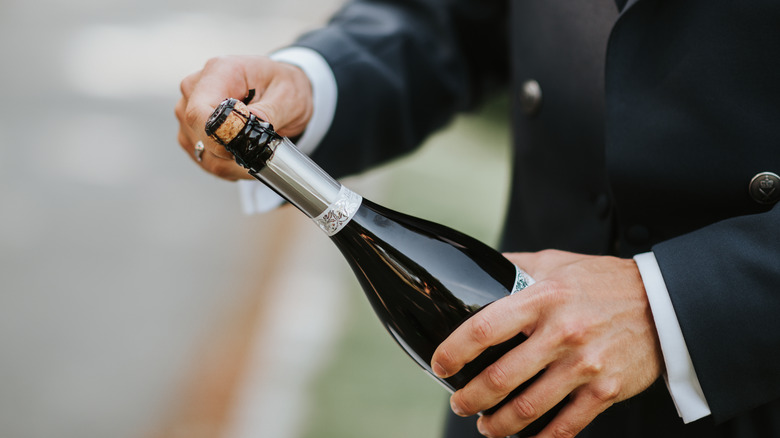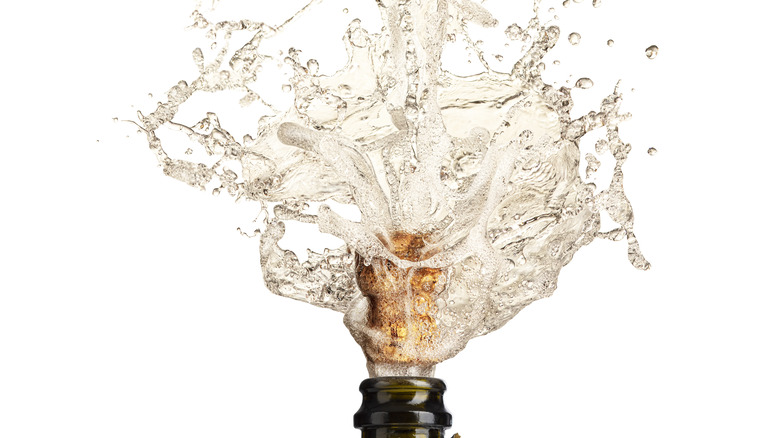Opening Champagne The Right Way Means Less Pop And More Safety
It's the holiday season, and you know what that means! Delicious dessert options, steaming mugs of spiked drinks, the richest, most flavorful comfort foods imaginable, and perhaps even a bottle of Champagne, or your choice of sparkling wine. It's tradition around this time of year, no matter what you're celebrating, to join with friends and family and crack open the best-of-the-best cuisine for the special occasion, and Champagne has always seemed to be a part of these annual celebrations.
According to Live Science, the long-standing tradition of serving Champagne at celebrations (birthdays, holidays, New Year) has its origins rooted in royalty. During the 18th century, the only people who could afford champagne were the richest individuals in the royal European courts. It wasn't until the late 19th century that Champagne became the global celebratory drink we see it as today. History professor at the University of Texas at San Antonio Kolleen M. Guy says that Champagne quite literally is a symbol of good things overflowing in abundance. Today, it's very easy to go out and buy an affordable bottle of sparkling wine to pour into the glasses of loved ones this holiday season, but before you do, you should be aware that with any great Champagne, comes the possibility of injury.
Safety first!
You may think that injuring yourself while opening up a bottle sounds silly, but you'd be surprised at how easy it is to hurt yourself and those around you while popping the cork out of a bottle of sparkling wine. It may also surprise you to know how serious a Champagne injury can actually be. The American Academy of Ophthalmology reports that a cork flying out of a Champagne bottle can reach a speed of up to 50 mph! At that speed, the cork can break glass and cause bleeding, abrasions, and glaucoma if it manages to hit some unfortunate soul in the eye. To avoid disaster, you should chill the Champagne (warm bubbly expands and builds up pressure), you must not shake the bottle, and never point it at anyone while attempting to open it.
In addition, Bon Appétit says that you should try to avoid making that classic "pop" noise, iconic to the Champagne experience. Why? Well, you have better control of the cork. Instead of gripping the sides of the cork and twisting it off, you must always have your fingers firmly on top of the cork to prevent it from flying off and instead focus on twisting the bottle. When you open the bottle slowly, and carefully, there should be little to no noise (maybe a gentle sigh as the gas releases). This quiet and firm bottle-opening method will be more refined and keep everyone — including yourself — safe.

